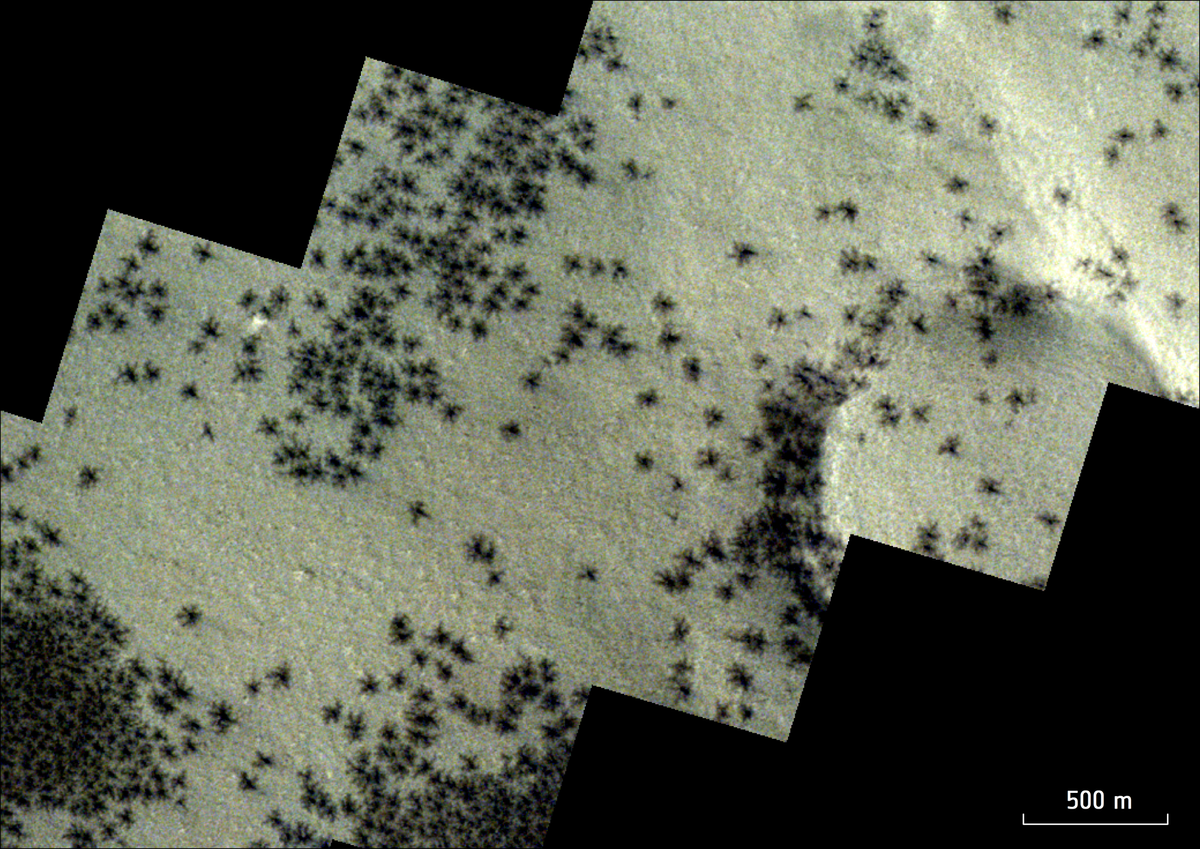Follow us on Google News (click on ☆)

Hundreds of black 'spiders' spotted in 2020 by ESA's ExoMars Trace Gas Orbiter. These formations are the residues of dusty gas geysers that burst through the planet's surface ice in spring.
Credit: ESA/TGO/CaSSIS
Each spring, the area nicknamed Inca City reveals black, thread-like formations reminiscent of spiders. These images, captured by the European Space Agency's (ESA) Mars Express orbiter and the ExoMars Trace Gas Orbiter, actually show seasonal eruptions of carbon dioxide.
These "spiders" are not creatures but gas channels ranging from 150 feet to about 0.6 miles (1 kilometer) wide. They appear when the lowest layer of carbon dioxide ice begins to melt under the heat in Mars's southern hemisphere during spring. This process, called sublimation, turns the ice into gas.
As the gas accumulates, it causes an explosion that pierces the ice layer, throwing dark dust into the air which then falls back down, creating a cracked pattern.

Digital model of Inca City formation created using recent data from the high-resolution stereo camera of the Mars Express satellite.
Credit: ESA/DLR/FU Berlin
Inca City is also known as Angustus Labyrinthus. This site was once thought to be petrified sand dunes or remnants of Martian glaciers. However, in 2002, it was revealed that this formation is part of a circular impact crater 53 miles (86 kilometers) wide, partially eroded and exposing magma intrusions that resemble ancient ruins.